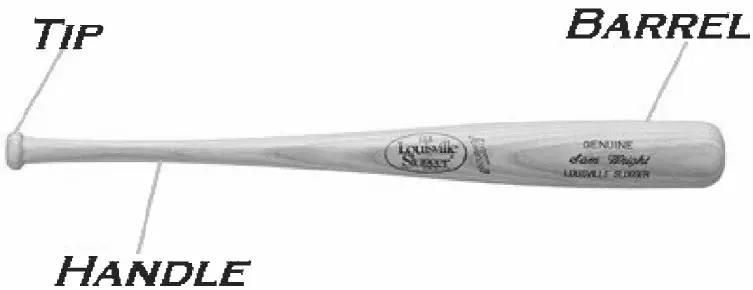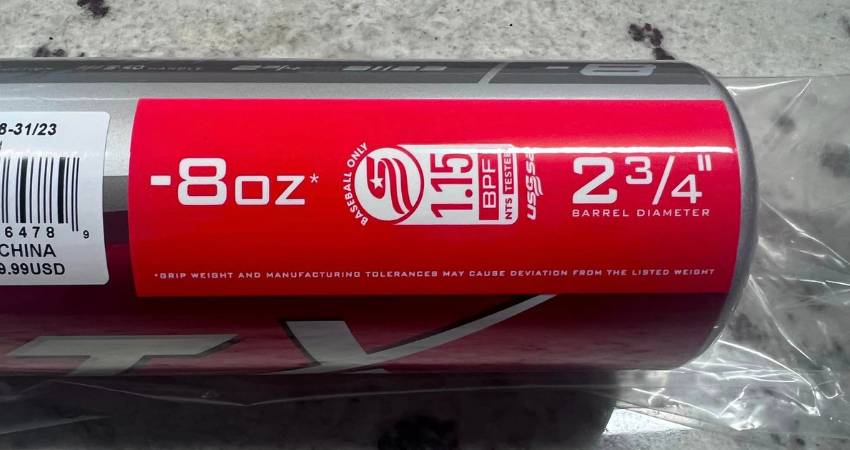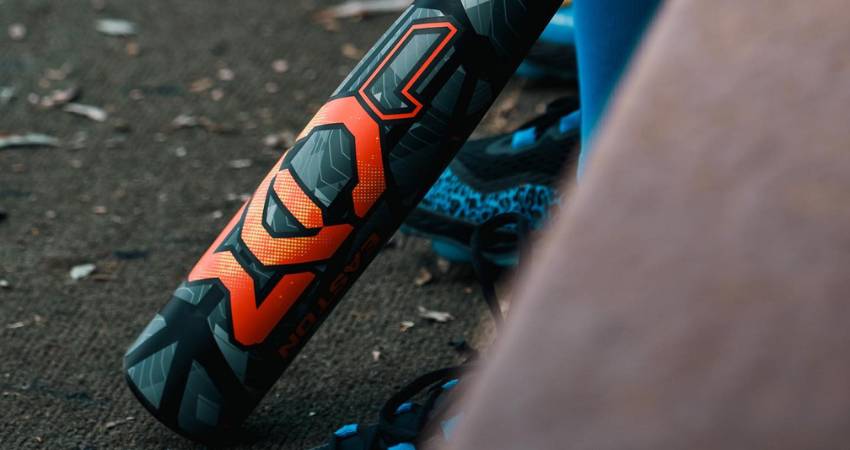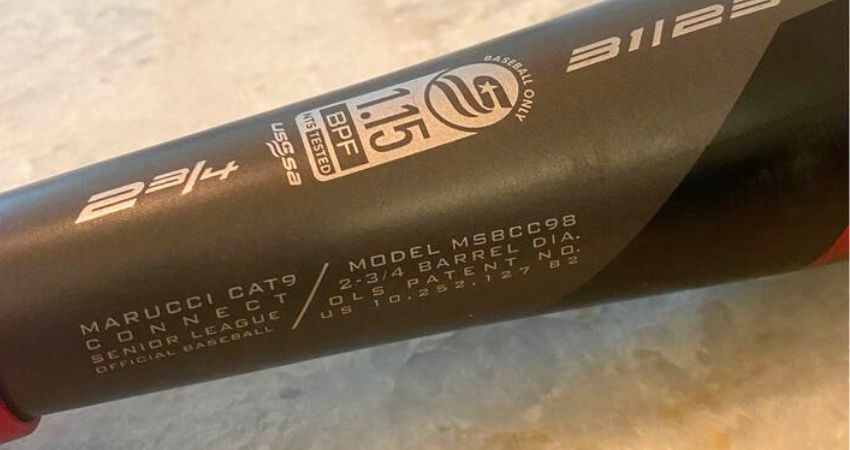The anatomy of a baseball bat is pretty easy to understand at first glance. It has four components – the barrel, the handle, the knob, and the end cap. Simple, right?
But did you know that each of these sections can drastically affect the performance of a bat? When you think of the different materials, design technologies, and features that can go into each of these sections, things start to look much more complicated.
Of course, as a player, you don’t need to dig too deep into the engineering side of things. But I believe it’s in your best interest to learn all you can about your baseball bat to grow as a player. It’ll help you choose a baseball bat that’s perfect for you and you alone.
And since you are already here, you want to start with the Baseball Bat Barrel (smart choice). I’ll give you a closer look at the barrel and help you understand all you can about this important section of the baseball bat. So, let’s hop in.
Table of Contents
Baseball Bat Barrel: What is it?
The barrel of the baseball bat, simply put, refers to the section that you use to strike the baseball as it hurls toward the strike zone. However, the measurement is done at the thickest part of the bat. It’s as simple as that. However, different leagues and organizations have different regulations regarding the diameter of the baseball bat barrel.

For example, the MLB pros always use a baseball bat with a barrel diameter of 2-5/8 inches since that’s the maximum allowed barrel size. The maximum barrel diameter for USA baseball leagues is also the same. However, in USA baseball, you’ll also find players use bats with a barrel diameter of 2-1/8, 2-3/8, 2-1/2, or even 2 inches
On other hand for Little League Baseball, the maximum allowed barrel diameter is 2-1/4 inches. And for Senior USSSA Baseball Leagues, a baseball bat with 2-3/4 inches barrel diameter is considered standard.
Now, does the barrel diameter of a bat make any difference in terms of how the bat performs? And do high-end baseball bats have bigger barrels? Well, yes and no.
Bats with a bigger barrel have a larger sweet spot, and the slightly larger hitting surface also allows you to make a solid connection with the ball slightly easier. On top of that, a larger barrel baseball bat also usually has a higher exit velocity. That means on a successful hit, the ball will fly out faster and harder.
This might make you think that larger barrels on a baseball bat are better. But that’s not the entire truth. A large barrel baseball bat will be a better choice only if you’re a power hitter. If you’re a contact hitter, you might be better off with the moderate barrel size on your baseball bat.
Larger barrel baseball bats are usually end-loaded, which means they are top-heavy. Moderate or medium barrel baseball bats are balanced, and similarly, small or narrow barrel baseball bats tend to be more beginner-friendly.
Larger barrel bats also have relatively low zone coverage and require a high grip strength to wield effectively. Medium barrel bats are good for zone coverage, but they have a neutral launch angle. So, hitting homers with them is somewhat difficult.
Finally, narrow barrels are good for beginners since they don’t need too much grip strength to wield effectively. These bats also have a high zone coverage and are pretty lightweight.
How Do You Measure a Bat Barrel?
To measure the barrel of a baseball bat, you need a tape measure and wrap it around the thickest part of the barrel. The size is usually measured in inches. The maximum size allowed in USA baseball bats is 2-5/8 inches or 2.61 inches.
What’s the Diameter of a Large Barrel Baseball Bat?
That depends on the league you’re referring to. For USA baseball leagues, the maximum barrel diameter allowed is 2-5/8 inches. That means a large barrel baseball bat for players competing in USA leagues would be 2-5/8 inches in diameter.

However, for USSSA baseball leagues, the rules are different. Here, the bat needs to have a BPF rating of 1.15, and it isn’t as strict on the barrel diameter as USA leagues. Typically, a baseball bat that’s 2-3/4 inches in barrel diameter is considered a large barrel baseball bat in USSSA leagues.
What is a Big Barrel Baseball Bat?
A big barrel baseball bat refers to an end-loaded baseball bat with a thick barrel diameter. These bats usually come with an extra bit of weight at the top part of the bat.

These bats are usually preferred by power hitters with good physical strength. Wielding this type of bat requires practice and a bit more strength. However, on a successful connection with the ball, these bats can generate more power compared to a medium barrel baseball bat.
Are 2¾ Barrel Bats Legal?
The legality of a baseball bat depends on the league you’re playing in. What that means is if one baseball bat is legal for use in High School Baseball, it doesn’t mean that it’ll also be a legal bat in the MLB.

With that said, a baseball bat with a 2-3/4 inches barrel diameter is usually illegal in USA Baseball Leagues. However, in USSSA Senior Baseball Leagues, it’s a perfectly viable barrel diameter. But the bat must also have a BPF rating of 1.15.
What is the Best Big Barrel Bat for Youth Baseball?
As I already said, USA-approved baseball bats have a fixed maximum barrel diameter of 2-5/8 inches. That means if you’re competing in the youth baseball leagues under USA rules, you can’t go with a big barrel baseball bat. However, when you’re playing a USSSA-approved game, you have a couple of good options.

But if I had to point to a single bat that you can buy without a second thought, I would definitely go with the MARUCCI CATX Connect USA Senior League Aluminum Baseball BAT. Why, you ask? Let me explain.
First off, Marucci, as a baseball bat brand, really needs no introduction. It’s the brand with the highest plate share in MLB, being a company that makes quality wooden baseball bats consistently. But they are also quite adept at delivering solid, high-end aluminum or composite baseball bats for amateur league players.
Now, the CATX Connect is a top-tier aluminum bat with a 2-3/4 inch barrel that’s made for both youth and senior league players. It’s available in weight drops of -10, -8, and -5. And the size options in this baseball bat range from 28 to 33 inches. But these are all just basic specs and don’t really explain the full extent of its quality.
The CATX Connect is made with AZ105 Alloy, which is a noticeable upgrade over the AZR Alloy that they made the CAT9 with. This improved material offers better strength and a higher response rate compared to the older iterations of this baseball bat series.
In addition, the multi-variable wall design in this baseball bat offers a larger sweet spot, letting you get that sweet, sweet connection to the ball much easier. The second generation of AV2 anti-vibration technology on the bat’s knob also enhances its response and reduces hand stings on a mishit.
It has a lot more going for it, and if I started going on about it, you’d be here all day. So, if you want to know more about this bat or any of the other best youth baseball bats, for that matter, consider checking out my article.
What is the Biggest Baseball Bat in History
There have been many “big” baseball bats, whether you’re talking about the length of the bat or the barrel diameter. But none of them come close to the novelty that’s resting beside the Louisville Slugger Museum. I’m talking about the Big Bat!
This huge 120-foot monstrosity weighs around 34 tons and is made using carbon steel. If not for this baseball bat, the Louisville Slugger Museum would look no different than any other buildings that are in the vicinity. The baseball bat is made of carbon steel and weighs around 34 tons.
It was erected in July of 1996, and the paint job on it was done using the same paint that’s used in battleships. And the design of the bat isn’t a generic one, either. As it turns out, this beast of a baseball bat is the same exact scale replica of the one that was used by the legendary Babe Ruth back in the early 20s.
The Bottom Line
The barrel of a baseball bat is the part that’s responsible for your swing speed and strike power. So, it’s always worth reading up on this section and learning all you can about it.
I hope my extensive discussion on what the barrel of a baseball bat is could help you understand it better. Good luck!
